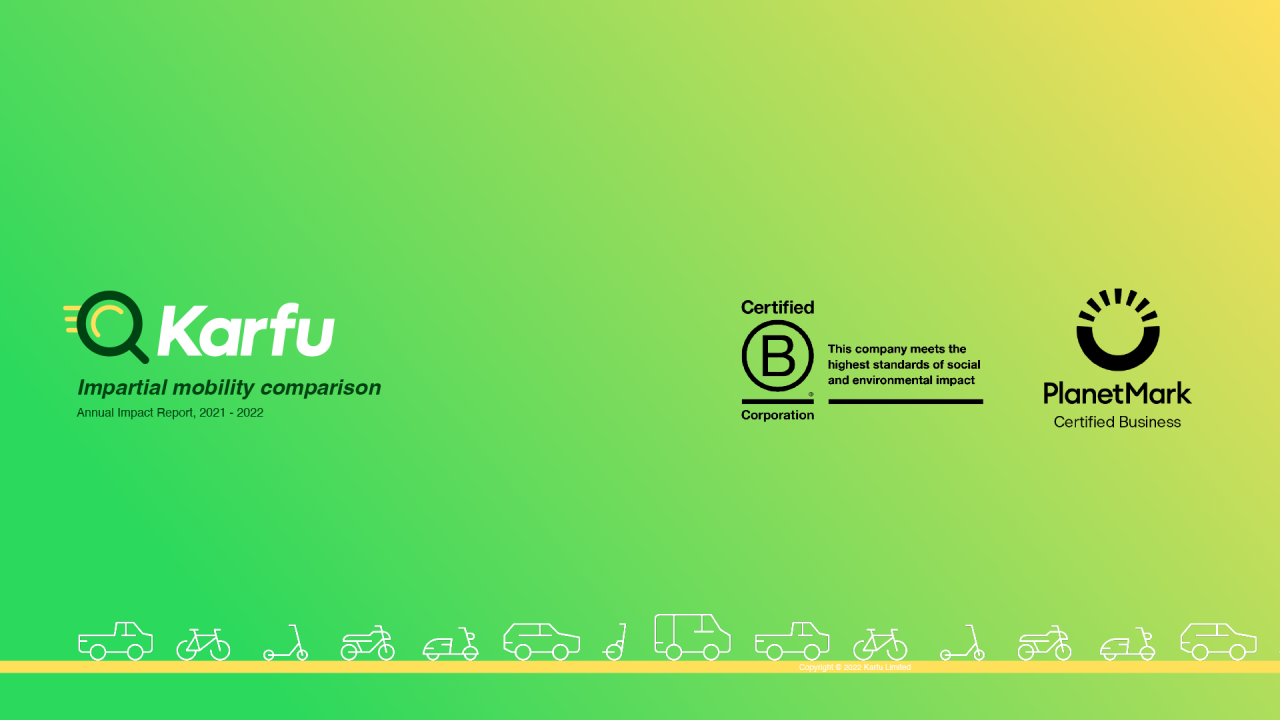Our digital footprint, though light whilst in Beta, will grow once launched to the public.
Karfu’s main product is a website, which means there are impact costs associated with its hosting, upkeep and consumer use.
Karfu uses AWS servers, which claim to be 80% less carbon intensive than other enterprise data centres.
Whilst AWS aims to be powered with 100% renewable energy by 2025%, we will continue to take into consideration that our impact is not zero and have attempted to calculate our footprint using free online resources.
Karfu has made steps to approximate the carbon footprint attributable to its digital presence (a) for hosting and (b) for user activity in the form of visits (which combines assumptions for new and return users).
Leaning on emissions information from Sustainable Web Design as a guide, we have taken data from our Google Analytics software to calculate g/CO2e per visit equivalent of the kWh generated per visit to the site, which we estimate to be 0.24 g/CO2e.
We also used examples found on the Website Carbon Calculator and Ecograder as points of comparison.
With the change in energy costs already seen this year, it will be interesting to revisit our methodology in the next period and see the impact of increased traffic.
We expect to be able to cover: the total number of users; time spent; device type used.
This should enable us to iterate upon our calculation and arrive at a value for g/CO2e per search conducted on our site.
We have shared this methodology with our assessors at Planet Mark and will also review the available paid and free resources for helping us to calculate more accurately in the next period.
Our Shared Workspace footprint, whilst infrequent this year, is represented under home-working.
Despite using a shared workspace only a handful of times during the year, we felt it was appropriate to try to calculate what the additional carbon impact would be, if included, because it will also trigger an assessment of employee commuting.
Sources:
Chris Adams, via ObservableHq
Health and Safety Executive
We made some basic assumptions around the amount of space required.
The Chartered Institution of Building Services Engineers (CIBSE) tells us that 11,670,000 of floor space, results in 1,062,048 of carbon dioxide emissions.
Without bottom-up data, like meter readings, this is indicatively 0.091 tonnes of CO2 per square metre, each year.
The UK legally required minimum is 11 cubic metres, per person, equivalent to 4.9461 m2.
We used 5 m2.
In the absence of floor-specific data from our shared office provider, we used the EPC rating of the building as a proxy.
We have since learned that this is not a reliable value and may vary by more than 10% from the correct figure. In future, obtaining an official energy rating for the workspace from the owner / operator may be a better approach.
This is an example of us trying to learn through experimentation, with the EPC certificate being an insufficient source of truth to make this calculation viable for our use.
Nevertheless, our goal was to show a value. We can improve upon the methodology.
We calculated 0.94 kg/CO2e per employee, per day, an interesting consideration when planning ahead for our annual employee footprint reduction.

